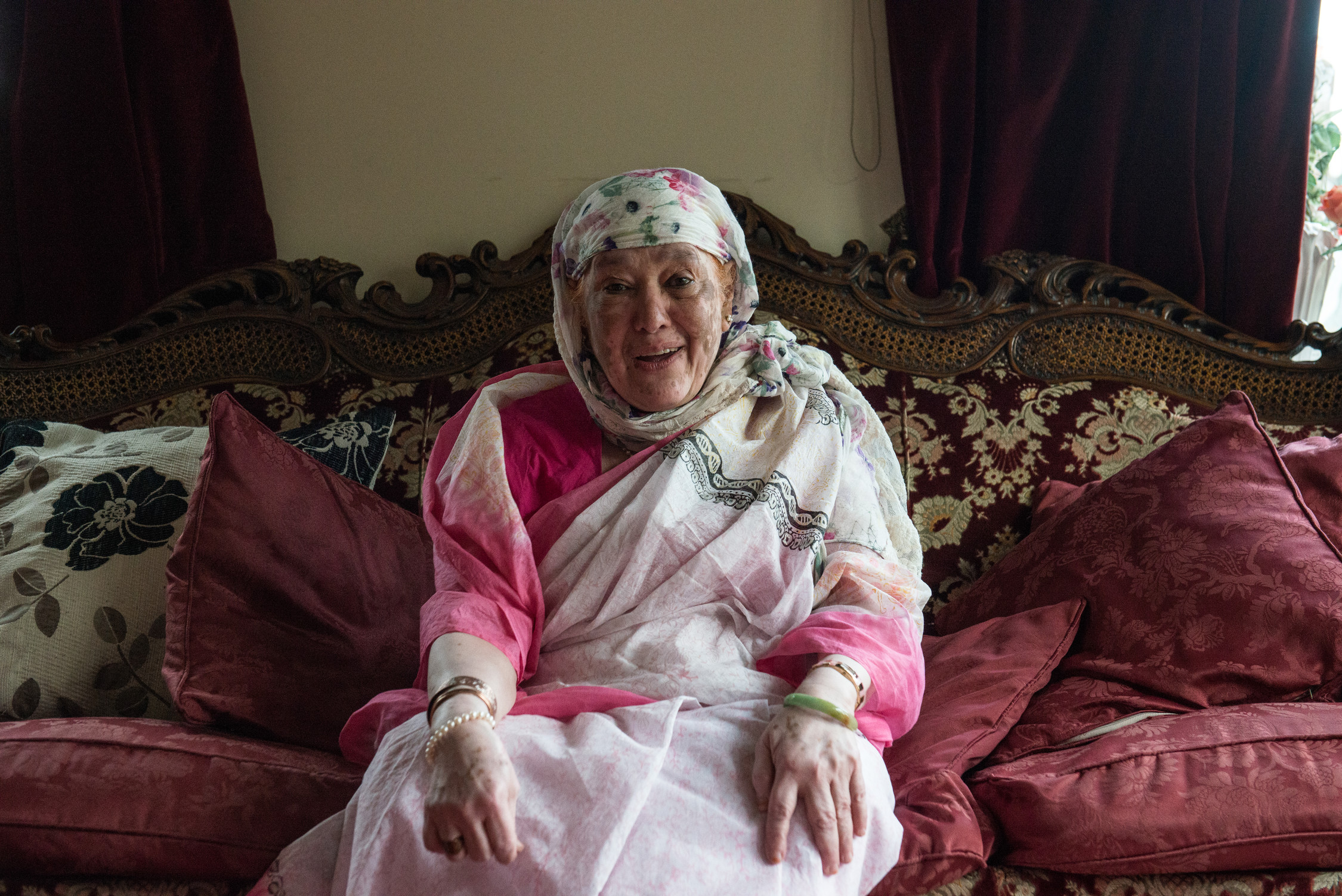Elderly care must pay more attention to exclusion mechanisms

There are more and more elderly people with migration roots. But not in the nursing home. Researcher Saloua Berdai argues for a proactive policy and more attention for invisible exclusion mechanisms such as racism. The full article was originally published in Dutch on sociaal.net. Photo by the Centre for Ageing Better
Older people, like the rest of the population, are becoming increasingly diverse. Nevertheless, older people with a migration background make considerably less use of professional care services for older people. They are particularly underrepresented in residential care centres.
“That’s because their culture deals with care for older people differently,” is often put forward as an explanation. However, there is increasing evidence that this is far too short-sighted. Moreover, you unilaterally place the responsibility on older people themselves, instead of on the service supply. (…)
What can residential care centres do about this? How can they achieve more culture-sensitive care? What thresholds and levers are there? Karel de Grote University College and Knowledge Centre Welfare, Housing, Care were commissioned by the then Minister of Welfare Jo Vandeurzen to search for answers. (…)
It doesn’t happen by itself
One of the crucial findings is that there is a need for a proactive policy to create a quality offer in residential care centres for older people with a migration background. The demand for more attention for this group of older people in care is not new. They are growing in number, knowledge about their specific care needs has increased and there is an increasing number of healthcare personnel with migration roots.
We also know that this group does indeed wish to make use of professional care. The ways in which healthcare providers can meet their needs are carefully documented. However, this did not naturally lead to more culture-sensitive care.
In other words, it doesn’t happen automatically. It is not because you recruit care staff with migration roots that older people with a migration background automatically find their way to your residential care centre. And it is not because there are reports and guides that map out the care needs of this group and offer ways to get started, that a residential care centre also sets up actions around this.
Lots of fish to fry
Elderly care has lots of fish to fry: underfunding, staff shortages, many processes of change, and recently the corona crisis. Switching to the positive mindset, in which residential care centres also pay attention to a smaller, invisible group of older people with migration roots, is then experienced as too much of a good thing.
At the same time, it is striking that residential care centres that consciously opt for such a proactive policy do so based on a growth- and future-oriented vision. For them, appropriate care for older people with a migration background is a form of care innovation and quality assurance. This frees them from the more problematic and ideologically coloured interpretation of culturally sensitive care. (…)
Our study confirms that there is no ‘one size fits all’ approach if you want to evolve towards a culture-sensitive care organization. (…) We did, however, detect some important underlying principles that can serve as leverage.
Get rid of superficial actions
The main principle is to work in depth and sustainably. So get rid of superficial isolated actions and instead develop a well-considered vision, policy and plan of action. Consider each action, at each level, and how they interact. The ultimate goal is to embed cultural sensitivity in the DNA of your organization.
For example, training is often organized for staff on ‘Dealing with diversity’. But the questions are not considered: What does this formation lead to? What vision and strategic and operational objective does it contribute to? Have we provided space to implement the lessons from the training in the workplace?
A sustainable policy has more chances of success when the residential care centre works in a participative manner. So include all layers of the organization in the change process: from board, management, supervisors, care and other staff to clients and potential clients. A clear choice of organization, time, resources and expert guidance are crucial for this.
Dynamics that work against
At least as important for the realization of a culture-sensitive care organization is attention to the way in which these levers are deployed. The ‘way in which’ is influenced by processes such as culturalization and racism. These, often invisible, exclusive dynamics can hinder the elaboration of ambitions for culturally sensitive care.
An example is what we call ‘othering’. That is the process whereby one’s own norm is seen as standard and the other is regarded as deviant, and this in a context of unequal power relations. We found that both older people and staff with migration roots are seen as deviant, inferior, different. The difference here is therefore not a neutral statement, but something negative.
At the same time, othering perpetuates stereotypes, discrimination and racism. This system is so ingrained that we are often not aware of it. However, unconscious does not mean innocent.
Changing these older people and staff members can lead to a culturalization of their questions: the person behind the question is no longer seen. An example: a female resident with migration roots asks to be cared for by someone of the same sex. This question is often linked to the cultural background of the resident, while older people without a migration background also ask for this.
Racism
Racism appears to be present in all its guises in the context of residential care centres: from humour, micro-aggressions, to clear racist acts, and institutional racism. This insight is not new in itself, but there is little incentive to develop an explicit anti-racism policy. (…)
Institutional and structural racism also makes ‘white’ organizations hesitate to develop an anti-racism policy. At the same time, the staff needs a clear policy with room for support for staff who experience racism. For example, they often do not know where to go in case of incidents.
In principle, every organization is absolutely against racism. In practice, however, the attention is ad hoc and the emphasis is on mediation. It is exceptional that a colleague or resident is fired after a racist incident.
Big impact
The impact of these invisible mechanisms cannot be overemphasized. In this way they also explain why approaches such as ‘diverse-sensitive’ and ‘culture-sensitive’ care are interpreted culturally.
Originally, these methods were intended to be broad and inclusive: it was about the ambition to provide care that takes into account diversity in terms of culture, religion, origin, disability, income, orientation, gender. But in practice, these approaches appear to reproduce exclusion from good care for minorities through these invisible mechanisms.
Or look at how it is that person-oriented care does not automatically guarantee tailor-made care for everyone. The constructed homogeneous image of older people with a migration background, due to the presumed and often problematic ‘being different’, prevents the unique person from being seen. That is exactly what stands in the way of person-centred care.
So if we want to work on culture-sensitive care for older people, we must pay more attention to these exclusion mechanisms. Then we have to think about the meaning that an organization or a person gives to ‘difference’ and ‘similarity’. This is an essential first step to achieve high-quality care for minorities in practice.
Working on accessible care for older people, which appeals to different care users, is only possible in a context, a society, which sees, recognizes and eliminates its own exclusive mechanisms.
Read also:
“Open attitude is a prerequisite to culture-sensitive care” stress Fatoş
Older migrants have the right to be treated with respect
—
Saloua Berdai Chaouni is a lecturer at Karel de Grote Hogeschool and a doctoral researcher at Erasmus Hogeschool and Vrije Universiteit Brussel.


Facebook Comments